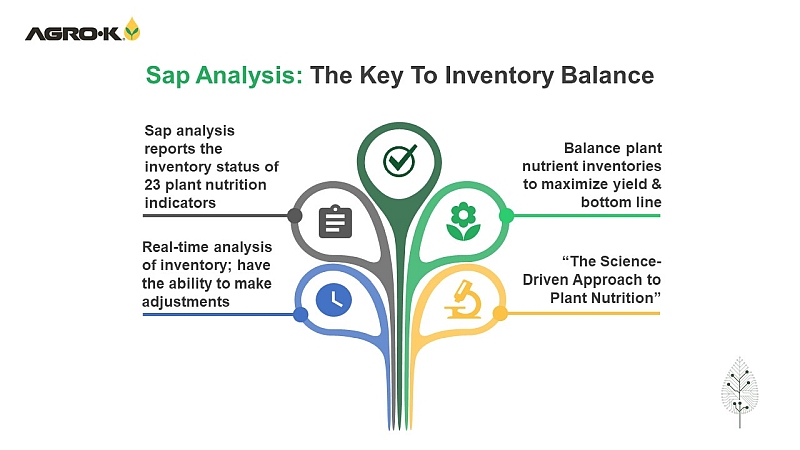Why Less Is More When It Comes To Sprayers on Your Farm

The Smart-Apply Intelligent Spray Control System helps growers reduce their dependence on chemicals and meet sustainability goals. The system is available at John Deere dealers in North America, South America, South Africa, Australia, and New Zealand. (Photo: Smart-Apply)

When it comes to spraying, most U.S. growers over-apply chemicals, Steve Booher, the Founder of Smart-Apply, says. The common notion, he adds, is that they feel this is a better option than under-applying. But the strategy can have the exact opposite effect and actually reduce effectiveness, as Booher analogizes.
“If you fill a glass of milk slightly above the rim, it doesn’t spill. The surface tension holds the milk in the glass,” he says. “But if you add slightly more, the milk flows out of the glass to a level under the rim. The surface tension of the molecules will pull the milk out of the glass.”
The same thing applies to over-spraying a leaf, Booher says.
“If the spray droplets run down the leaf, it will pull other spray droplets with it. Appling the right amount of chemical properly covers the leaf surface without initiating a droplet run to the leaf tip or onto the ground,” he says. “Also, the proper application rate along with the proper air speed dramatically reduces spray drift.”
Plenty to Factor
This is what makes spraying complicated, Booher says — the multitude of issues that must be considered, such as spray pressure, air speed, and chemical-to-water concentration. Beyond their crops, growers also need to consider the age and stage of growth, as well as density of their trees or vines, when determining how much to spray. The rate of application, nozzle size, and speed of their tractors are other critical factors.
“There is an incredible amount of knowledge farm managers and operators must have to optimize their spraying and, ultimately, their results,” Booher says.
Adding to the list, Tim Schaal, the CEO of Airtec Sprayers, cites worker safety and environmental factors, such as wind or rain.
“A mistake made in any of those steps in the process could be costly, leading to a worker injury or a wasted spray application that did not achieve the desired results,” he says.
While most crop producers do have a deep knowledge of soils, fertilizers, nutrition, and crop growth stages, according to Pentair-Hypro Agronomist Nick Fleitz, when it comes to application technology and factors that contribute to optimizing sprayer performance, most producers will not feel as comfortable or knowledgeable.
“However, adoption and optimization of application technology is one area that many growers can see return on investment,” he adds.
Wayne Riddle, the Agriculture Sales Manager with Slimline Manufacturing, concurs. “Spray drift and missing the target can cost the grower a lot of money and have a negative impact on the environment. With proper training and knowledge, operators will be better able to control drift and maximize spraying efficiencies,” he says.
Constant Consideration
The possibility of spray drift should always be at the forefront when spraying, Fleitz says. Keeping all applied products in their intended fields will provide better performance and also limit new regulations on those products.
“We have seen increased scrutiny applied to pesticides and making sure we apply them with stewardship in mind,” Fleitz says. “If we fail to properly apply them, we risk losing access in the future.”
Such is already the case outside the U.S.
“Drift is a major concern for growers around the world,” Booher says. “There are government mandates addressing drift in the European Union, Australia, and New Zealand.”
For example, he notes, the EU has mandated a 50% reduction in chemical use by 2030, specifically to address issues such as drift. Additionally, sprayers have to be certified in the EU.
“I was just in Europe, and, in some regions of Switzerland, communities were voting on whether or not to allow growers to spray near communities,” Booher says. “Closer to home, California has limits on when growers can spray. Oregon is considering incentivizing growers to use new technologies that dramatically reduce the amount of chemicals used.”
One such technology involves a remote sensing method, Lidar (Light Detection and Ranging), to automatically determine the size and density of individual trees or vines.
“The system precisely applies the optimal amount of chemicals to the foliage, reducing chemical use by an average of 50% and decreasing drift by 87%,” Booher says.
Crop-specific attachments are key in controlling the wind and droplets when mitigating drift, Riddle says. Proper control of air direction, calibration, using the right nozzles, and adhering to the “gear up, throttle down” philosophy will optimize coverage, improve deposition, and reduce or eliminate drift while saving chemicals and money, he says.










